Delving into the mysterious world of dreams can provide a fascinating glimpse into the depths of our subconscious minds. Prehistoric jungle dreams, in particular, serve as a captivating window into our evolutionary roots and psychological underpinnings. In this exploration, we will uncover the meaning behind the fantastically vivid imagery of these dreams, the archetypal symbols that populate them, and the powerful emotions they can evoke. By interpreting the messages from this primordial realm, we can potentially access valuable insights to foster our personal growth and development.
Understanding Dream Interpretation
Dream Interpretation through History
Dream interpretation has been a fascinating subject for many cultures throughout history. In ancient times, dreams were considered to be messages from the gods or supernatural beings. For example, Egyptians believed that dreams were prophetic and could guide them in everyday life, while Greeks believed that dreams could provide insights into personal or collective problems. Through the study of dream interpretation, it is believed that one can gain a better understanding of their subconscious mind and, in the case of prehistoric jungle dreams, it could provide insights into evolutionary traits and possibly even ancestral memories.
Jung’s Theory
When it comes to analyzing dreams, Carl Jung’s theory of dream analysis offers an insightful framework. Jung, a Swiss psychiatrist, believed that dreams are essential expressions of the unconscious mind. He suggested that dreams could be interpreted as manifestations of our deepest desires, fears, and unresolved conflicts. In the context of a prehistoric jungle dream, it is possible that these dreams symbolize a connection to our evolutionary past, representing primal instincts and innate behaviors that have been inherited from our ancestors.
Freud’s Contributions
Furthermore, Sigmund Freud, the father of psychoanalysis, also contributed extensively to the field of dream interpretation. According to Freud, dreams serve as a way for our unconscious mind to express suppressed thoughts, emotions, and desires that we might not be aware of in our waking state. In relation to prehistoric jungle dreams, they could symbolize a yearning to connect with our past, as well as an opportunity to explore our deep-seated instincts and primitive side of human nature.
The Importance of Symbolism
Another aspect to consider when interpreting prehistoric jungle dreams is the importance of symbolism. Dream symbols can represent a wide range of emotions, experiences, or internal struggles. For example, the image of a dense jungle might symbolize an individual’s fear of the unknown, and wild animals may represent untamed desires or uncontrollable urges. The process of interpreting these symbols can be a powerful tool in understanding the underlying emotional and psychological aspects that may have led to dreaming about a prehistoric jungle.
Exploring the Sociocultural Context
To understand and interpret prehistoric jungle dreams effectively, it is essential to explore the cultural and social context in which the dreamer is situated. Exposure to images and stories related to the prehistoric world, or an interest in our ancestral heritage, could influence the content of their dreams. Moreover, certain cultural beliefs or environmental factors might impact the way an individual perceives and interprets such dreams. By delving into the sociocultural context, dream interpreters can gain a more comprehensive understanding of the dream’s possible meanings and implications.
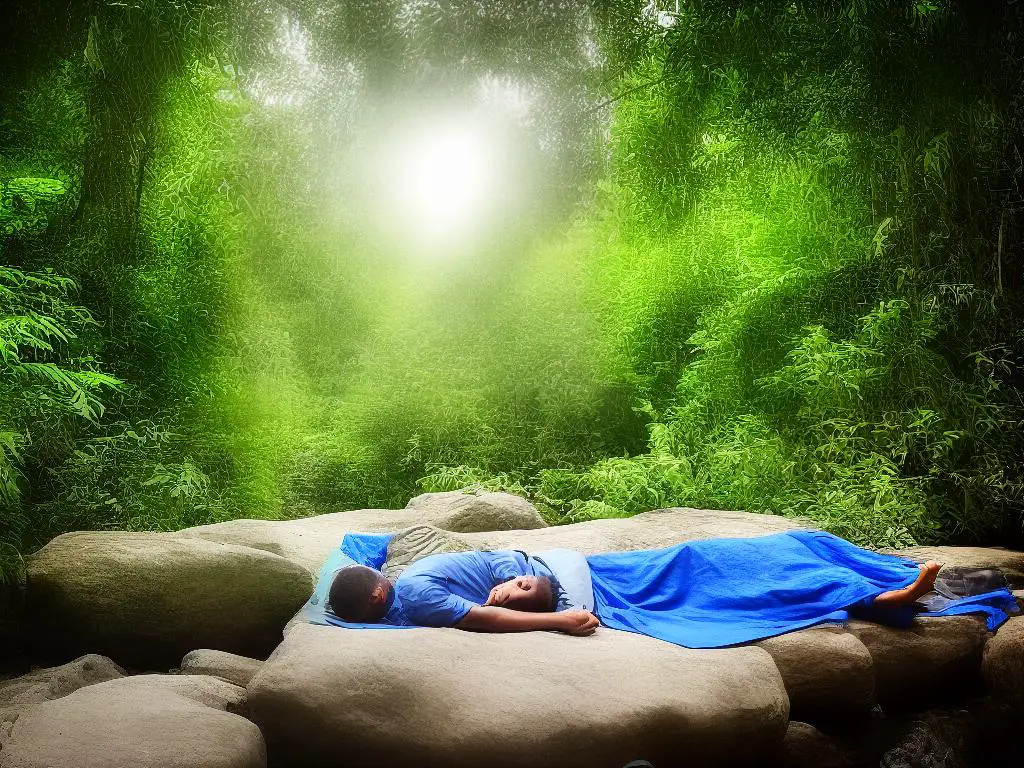
The Prehistoric Jungle Setting
The Prehistoric Jungle: A Fascinating Setting
The prehistoric jungle remains an enigmatic and captivating backdrop for dreams, characterized by dense vegetation, diverse and sometimes giant plant species, and large trees that create a shaded environment on the forest floor. These jungles were home to a wide range of now-extinct flora and fauna, establishing a unique ecosystem and playing a critical role in the early stages of human evolution. The lush and diverse vegetation provided ample resources for early humans and animals, shaping their lifestyles, the food they consumed, and their adaptability to a changing environment. In today’s world, this fascinating setting continues to grip our imagination, influencing our dreams and the way we view the past.
Prehistoric Fauna
One of the most captivating aspects of prehistoric jungles is their unfamiliar and mysterious fauna. Some creatures that roamed these ancient ecosystems, such as the colossal dinosaurs, seem almost fantastical in nature, yet they were very much a part of this world millions of years ago. Alongside the gargantuan reptiles were diverse species of mammals, insects, reptiles, amphibians, and birds, contributing to the biodiversity that we can only imagine today. As humans developed and evolved, these jungles became a battleground for survival, leading to both cooperation and competition between species.
Prehistoric Flora
In addition to the captivating fauna, the prehistoric jungles were teeming with flora that likely inspired awe and curiosity in our early ancestors. Giant ferns and towering conifer trees dominated the landscape, offering shade, sustenance, and a multitude of resources. The forest floor would have been a playground for early humans, with resources to both satisfy their basic needs and feed their expanding minds. An abundance of fruits, nuts, and other edible plants, as well as natural medicinal remedies and shelters formed from the underbrush, provided nourishment and security for our ancestors.
The Mythology of Prehistoric Jungles
The idea of the prehistoric jungle has transcended time, remaining an archetype within the collective unconscious and fueling the imagination of countless dreamers. The concept of a primeval, mysterious, and powerful world appeals to our fascination with the notion of lost civilizations and an Eden-like paradise. This mythical dream world, represented by the prehistoric jungle setting, has found its way into countless works of art, literature, and cinema, encapsulating our innate human curiosity and fascination with the narrative of our origins.
The Significance of the Prehistoric Jungle
The prehistoric jungle holds a unique and essential place in human history, as it influenced and shaped our ancestors’ lives. As early humans navigated through this challenging and opportunity-filled landscape, they developed crucial survival skills and learned to adapt. This provided a foundation for their descendants to evolve and thrive. The prehistoric jungle setting reminds us of our deep-rooted connections with nature, our place within a larger ecosystem, and the inherent curiosity that led our species to explore, expand, and create the intricate web of civilizations that now populate our world.
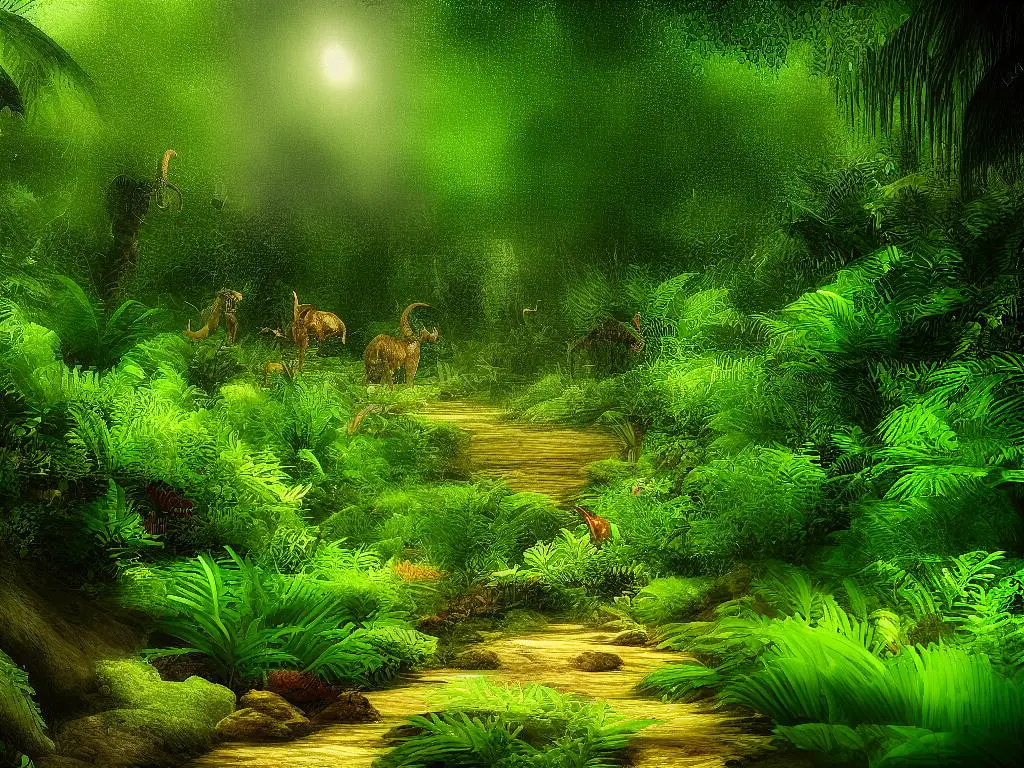
Common Themes and Symbols in Prehistoric Jungle Dreams
Dinosaurs in Prehistoric Jungle Dreams
Within the context of the prehistoric jungle, dinosaurs often emerge as a significant symbol in dreams. They represent the raw power and untamed nature of the ancient world, embodying our primal instincts, fears, and desires. Dinosaurs in dreams may indicate a need to confront and overcome deeply entrenched fears or repressed emotions. Furthermore, they can symbolize an overwhelming problem or a seemingly insurmountable situation, reminding dreamers that they possess the strength and tenacity required to face these obstacles head-on. The presence of dinosaurs within the prehistoric jungle dreamscape reinforces our connection to the past and serves as a constant reminder of the resilience of the human spirit.
Primitive Humans in Prehistoric Jungle Dreams
Primitive humans are another common theme in prehistoric jungle dreams, embodying our most basic desires for survival, procreation, and exploration. These ancient people’s way of life is often perceived as more straightforward and honest than our modern existence, and their presence in dreams can symbolize a longing to connect with our true selves. Additionally, primitive humans in a dream can represent the dreamer’s struggle to adapt to change or their reluctance to let go of the past. It’s essential to consider the context and role primitive humans play in the dream when interpreting their meaning.
Vast Landscapes in Prehistoric Jungle Dreams
Vast landscapes are also a prevalent motif in prehistoric jungle dreams, showcasing the untamed beauty and inherent danger of the world at that time. These dreamscapes often consist of lush jungles, open plains, or towering mountains, all teeming with life and peril. These landscapes can symbolize the dreamer’s exploration of their inner self or the need for adventure, growth, and self-discovery. The terrain’s character and obstacles encountered within the landscape can provide valuable insight into the dreamer’s emotional and psychological state.
Predators in Prehistoric Jungle Dreams
Another significant symbol in prehistoric jungle dreams is the appearance of large predators, such as sabre-toothed cats or crocodile-like creatures. These animals represent hidden fears and unconscious emotions that have not been acknowledged or dealt with in waking life. Confronting these predators in the dream may symbolize the need to face and overcome fears, helping the dreamer grow and move forward in their waking life.
Mythological and Fantastical Creatures in Prehistoric Jungle Dreams
One of the most captivating aspects of prehistoric jungle dreams is the appearance of mythological or fantastical creatures, like dragons or giant ape-like beings. These creatures represent the boundless power of the human imagination and the enigmatic nature of our ancient past. Engaging with these beings in the dream may suggest a desire to explore the unknown, whether within the dreamer’s psyche or the mysteries of the world surrounding them. The emotions and interactions with these creatures can provide valuable insights into the dreamer’s inner state, and what challenges they might need to confront in order to reach their full potential.
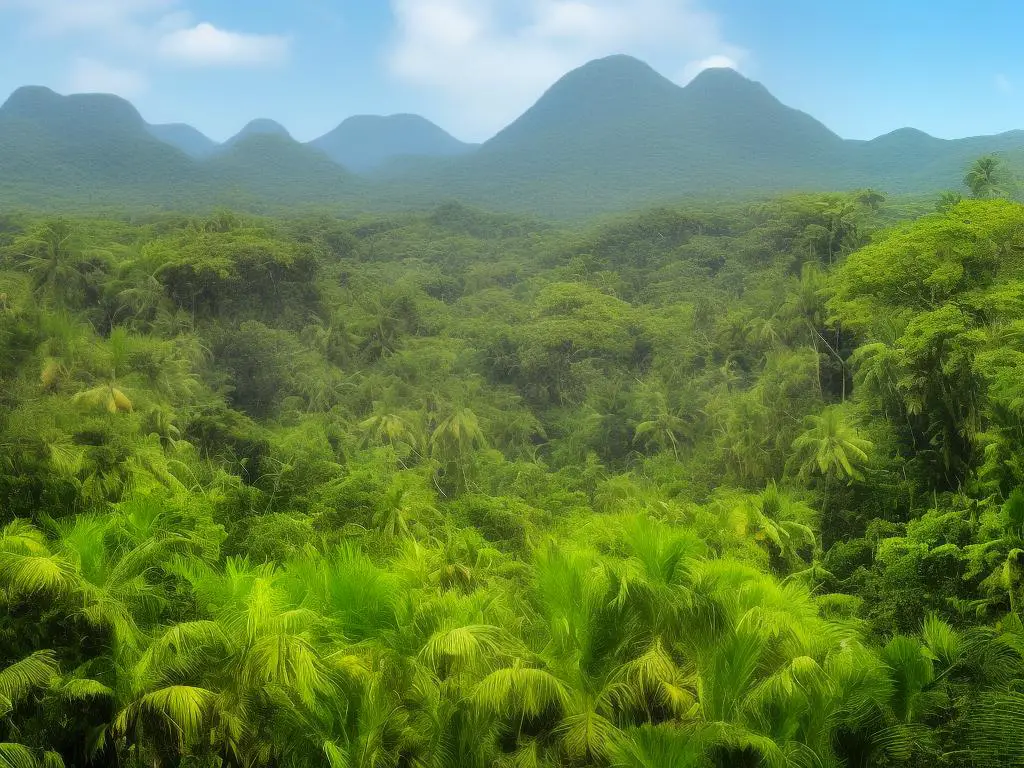
Psychological Significance of Prehistoric Jungle Dreams
Prehistoric Jungle Dreams: Delving into the Psychology
Prehistoric jungle dreams offer a fascinating and intricate subject to examine from a psychological standpoint. These dreams may stem from the deepest parts of our collective unconscious, tying us to an ancient era when our ancestors resided and thrived in jungles. Jungian psychologists propose that the collective unconscious is an extensive pool of inherited knowledge, instincts, and archetypes that make up the psychic legacy of humanity. Consequently, prehistoric jungle dreams may mirror the primal urges, instincts, and survival strategies that our ancestors developed to endure in their primitive environments.
Emotional Responses to Prehistoric Jungle Dreams
From an emotional standpoint, prehistoric jungle dreams can evoke feelings of curiosity, excitement, fear, and even nostalgia. The unknown and unpredictable nature of prehistoric jungles can cause anxiety and fear, especially when facing dangerous creatures and situations. However, these dreams can also draw upon our adventurous spirit and innate curiosity, reflecting our need to explore and understand the world around us. Furthermore, these dreams may instill a sense of connection to our ancestors and a longing for a simpler time when humans lived more harmoniously with nature.
Connecting With Nature Through Prehistoric Jungle Dreams
Dreams of prehistoric jungles may indicate a desire for a deeper connection with our natural surroundings and becoming more grounded in our environment. In today’s fast-paced and ever-changing world, many people feel disconnected from nature and the innate wisdom that comes from living in harmony with it. These dreams might serve as a reminder of the importance of reconnecting with the natural world and understanding our place within the global ecosystem.
Unlocking Ancient Wisdom: Evolutionary Perspective on Prehistoric Jungle Dreams
From an evolutionary standpoint, prehistoric jungle dreams could be our subconscious mind’s way of tapping into the human psyche’s inherited knowledge. Our ancestors’ experiences and survival skills are embedded in our DNA, and these dreams may provide us with an opportunity to learn from them. This perspective suggests that such dreams could potentially be of great benefit, allowing us to draw on ancient wisdom to tackle modern-day challenges effectively.
Inspiration and Insight From Prehistoric Jungle Dreams
Prehistoric jungle dreams can inspire creativity and insight by transporting us to a time and place far removed from our daily lives. Stepping into a prehistoric world within our dreams may give us the opportunity to explore new ideas, problem-solving techniques, and ways of connecting with others that our conscious mind may not have considered. Tapping into this ancient landscape can unlock hidden potential and provide a fresh perspective on life’s challenges. Regardless of the reason behind these dreams, they offer a unique chance to reflect on our past, present, and future, connecting us with the timeless wisdom embedded in our very nature.
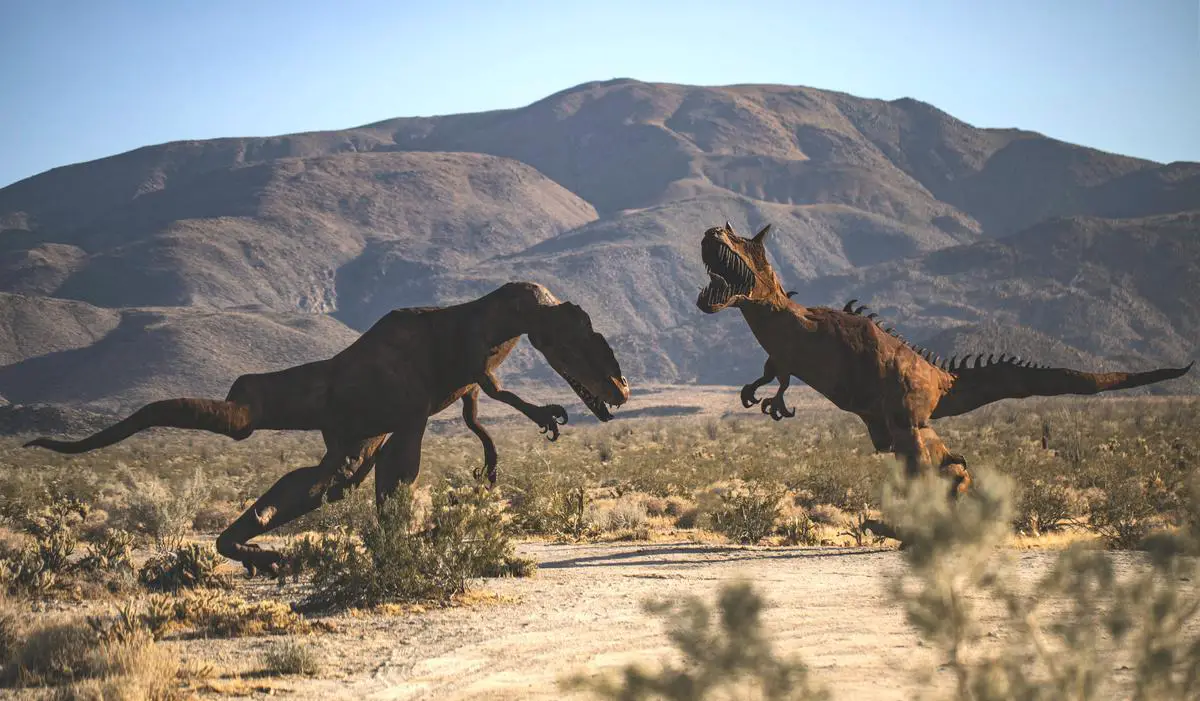
Photo by stephenleo1982 on Unsplash
Applying Dream Interpretation for Personal Growth
Dream Interpretation for Personal Growth
Dream interpretation, especially when it comes to prehistoric jungle dreams, can be valuable for those seeking insights into their subconscious mind’s desires, fears, and overall perspective. Jungian psychology focuses on interpreting archetypes and symbolism within dreams and can offer guidance on how to use these insights for personal growth. Analyzing various elements present in prehistoric jungle dreams, such as dinosaurs, lush landscapes, or ancient tools, offers individuals the chance to explore their emotional and psychological landscape more deeply, leading to a more profound understanding of themselves.
Identifying Recurring Themes
One way to apply dream interpretation for personal growth is by identifying recurring themes in your prehistoric jungle dreams and exploring their potential significance within your waking life. For example, if you consistently dream of being chased by a dinosaur, you can take some time to examine the real-life challenges or obstacles that may be causing you anxiety, stress, or feelings of vulnerability. By acknowledging and addressing these issues, not only can you overcome them but also develop resilience and a better understanding of how they affect your overall well-being.
Recognizing Symbolism
Another important aspect of using dream interpretation for personal growth is recognizing the symbolism present in your prehistoric jungle dreams. Oftentimes, certain elements in your dreams can hold specific meaning related to your own personal journey and experiences. For instance, a dense jungle may represent feelings of being overwhelmed or lost, while a clear, open space might indicate a desire to escape or find tranquility in chaotic situations. By examining the symbolism in your dreams, you can identify areas in your life that may require attention and growth.
Integrating Dream Insights into Daily Life
Moreover, integrating dream insights into your daily life can be the key to personal growth. Harnessing the transformative power of these dreams and applying it to your waking life is essential. You can begin by journaling and reflecting on your prehistoric jungle dreams, documenting the emotions, symbols, and messages that surface. From there, consider how you can use these insights to address any unresolved emotions, identify opportunities for self-discovery, or develop healthier mindsets and habits.
Conclusion
To sum up, applying dream interpretation to your prehistoric jungle dreams can provide valuable insights into your subconscious mind’s desires, fears, and perspectives. By identifying recurring themes, recognizing symbolism, and incorporating these insights into your everyday life, you can ultimately achieve personal growth and development. Whatever direction your prehistoric jungle dreams may take, remember that they hold the potential for profound self-understanding and can serve as a catalyst for change and growth in your waking life.
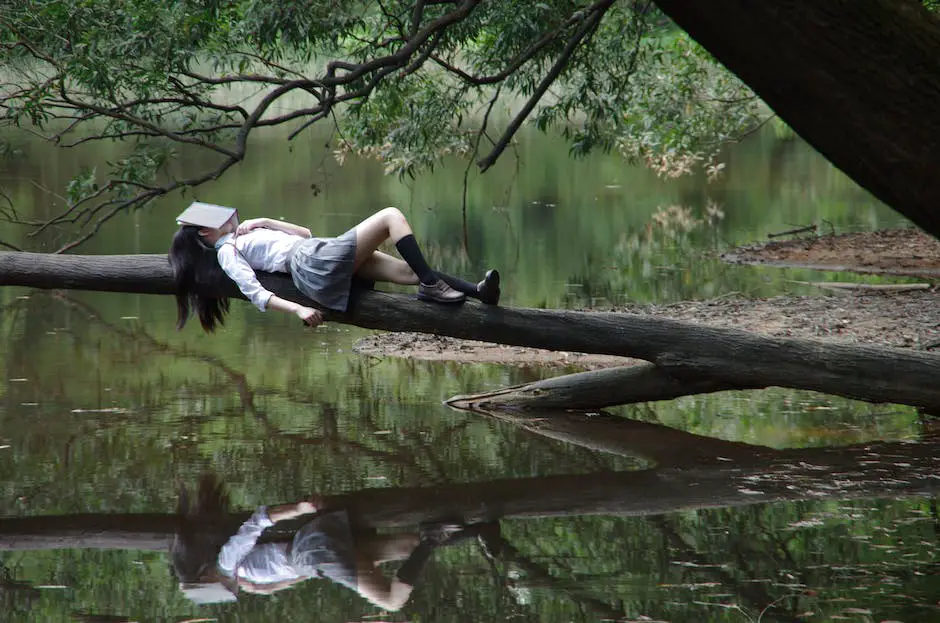
Ultimately, the symbolism and psychological significance of prehistoric jungle dreams offer a rich tapestry of insights into the human psyche’s vast and complex landscape. Daring to explore these enigmatic dreams and interpret their meaning can help us understand our own evolutionary roots, face our deepest fears, and nurture self-awareness. It is through this courageous journey into the unknown that we can harness the power of these dreams, transforming them into guiding lights, illuminating the path to personal growth and self-discovery.
